Innovations in AI search mean unlinked brand mentions directly contribute to SEO visibility in search engines and LLM responses.
Journalist outreach (through Help A Reporter Out and similar platforms) is one of the best ways to get your brand mentioned on authoritative sites.
It’s perfect timing since HARO is back again, restored to its former glory.
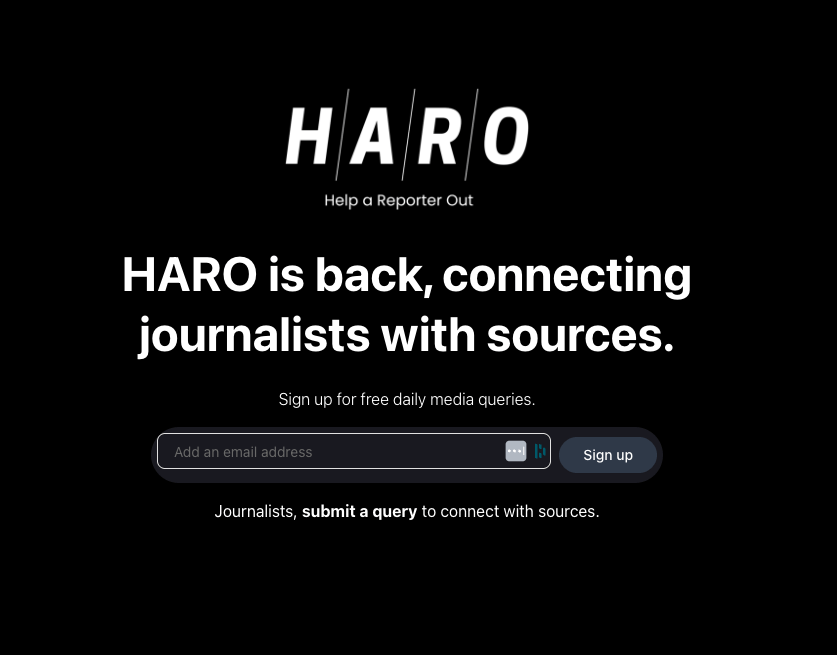
Responses have been cleaned up, spam has been cut, and it’s a solid way to earn high-quality links and mentions.
Here’s your blueprint for maximizing your journalist outreach efforts to earn links and mentions using HARO (and alternative platforms).
The HARO link building model is simple:
- A journalist puts out a callout (often with a tight deadline) for an expert quote or opinion.
- You, or your client, reply with a helpful, relevant answer.
- If selected, your contribution is included in the article, with a brand mention and often a backlink.
Here’s an example of a journalist callout for a lifestyle magazine:
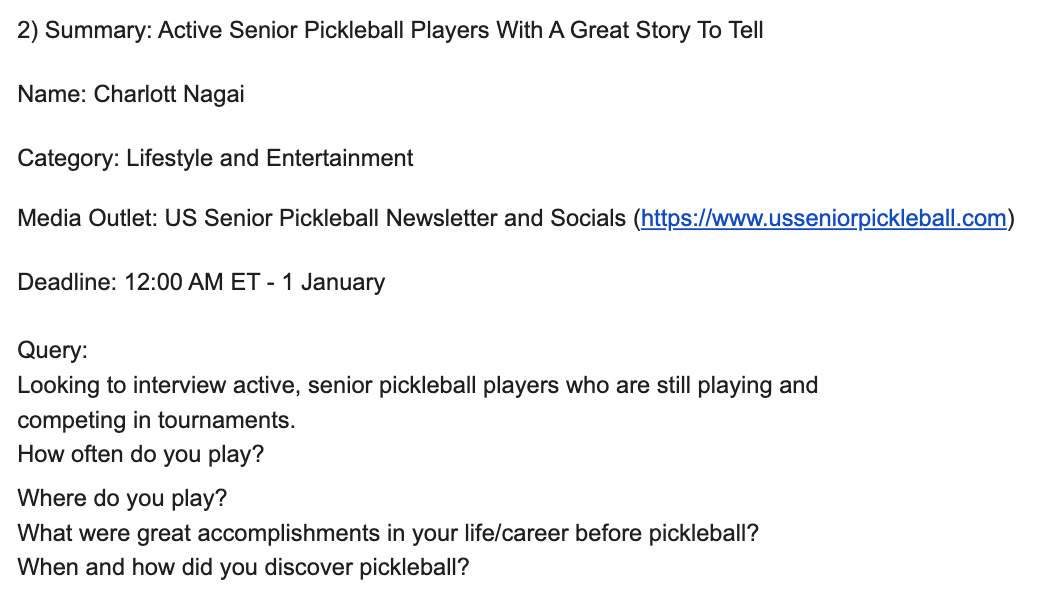
The win for your brand is in getting links and/or mentions from authoritative publications.
Even when unlinked, they act as signals of credibility. Google has long used brand mentions to inform E-E-A-T (Experience, Expertise, Authoritativeness, Trustworthiness), and LLMs are trained on content where your name shows up.
The more often you’re mentioned in quality contexts, the more likely you are to be surfaced in search and AI-generated answers.
To validate if a website is authoritative (and worth getting a link or mention from), you can check the authority in Ahrefs’ Site Explorer. Look for the Domain Rating metric. It’s a 100-point score indicating a website’s online authority, and the higher the rating, the more authoritative the website is.
It’s also worth checking out whether the publication gets traffic from search engines and earns backlinks naturally.
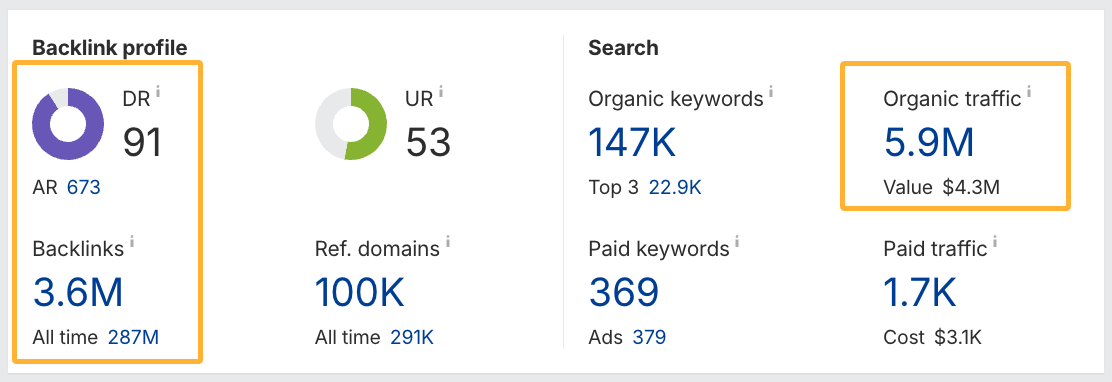
So for this example, the metrics look great, with high authority and a large amount of organic traffic. But we also want to take a look at the site’s backlink profile. Avoid any sites that mainly get bad links.
You can check this in the Backlinks report in Site Explorer:
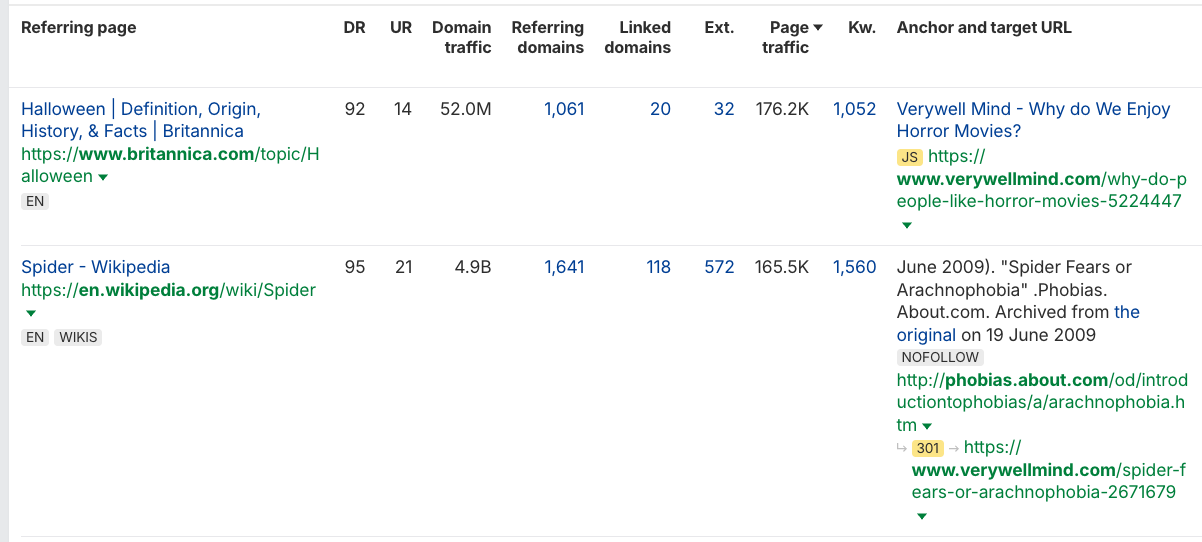
Lastly, head over to the site and check out some of the most recent posts. Make sure the content is high quality and offers value to the reader.
But, hang on… isn’t HARO dead?
Not quite. HARO went through a few ownership changes. While owned by Cision, the platform was redesigned, which led to glitches, complicated UI, AI-generated spam, and a big drop in trust from both journalists and sources.
For a while, it seemed unusable until it was eventually shut down. But things have changed.
Featured.com acquired the platform and have since overhauled it, focusing on reducing spam, filtering out low-quality AI replies, and restoring trust in the journalist–source relationship.
We acquired and revived HARO to bring it back to what made it great in the first place. For years, HARO was a trusted resource for both journalists and sources, and we saw real value in restoring that. The response to its return has been incredible.
That said, we’ve also listened closely to journalists who voiced concerns about declining quality and trust in the platform. Every feature we’re building now is focused on solving those issues — from improving source verification to enhancing the overall experience for journalists. Our goal is simple: to make HARO the most trusted place for journalists to find credible, high-quality sources again. And so far, we’re on the right track.
I received 690 callouts from journalists and writers in the last three weeks of testing it. Brett also shared that every minute, a journalist connects with a verified HARO source.
The opportunity this offers brands is worthwhile for those who lean into connecting with journalists in a genuine, authentic way.
Many members of the Ahrefs marketing team have used HARO over the years with varying degrees of success. Lately, our team has put out a number of callouts on similar platforms so we could quote experts in our content. Here’s an example:
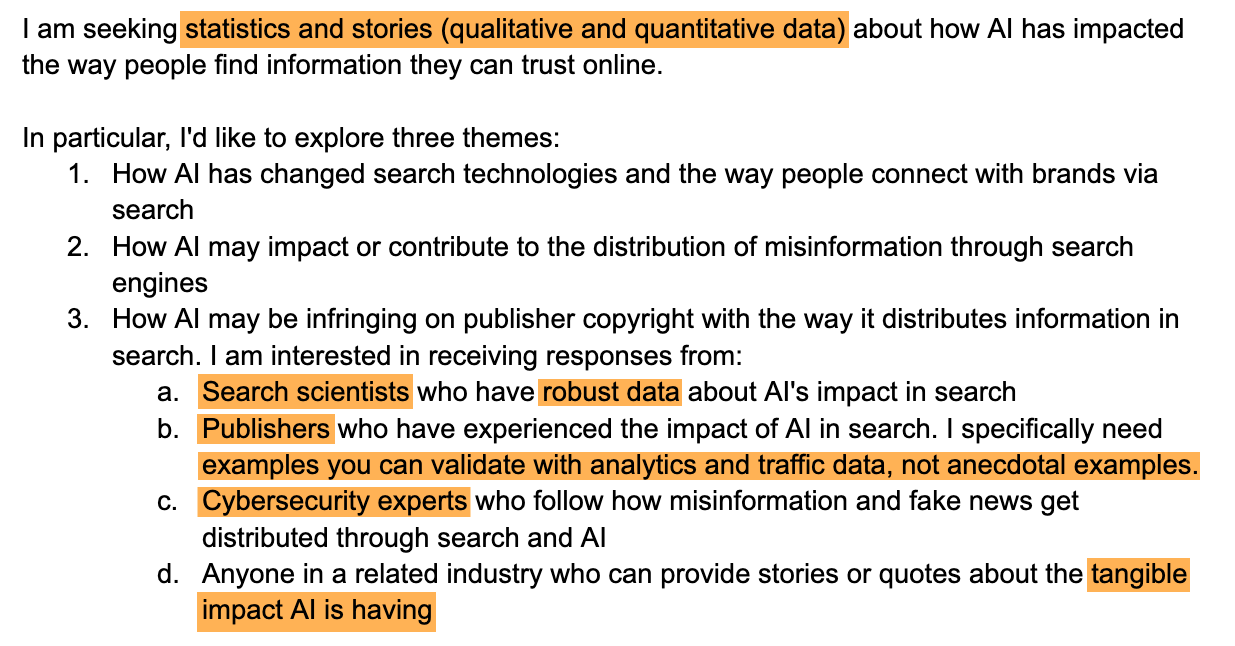
Most of the time, the responses we get back are lacklustre at best, completely irrelevant or AI-generated spam, at worst.
Here are our top tips on how you can succeed when pitching to writers and journalists for a link or mention.
1. Show, don’t tell (and definitely don’t explain an obvious concept)
I classed 68% of the responses I received to the above callout as a waste of time. But here’s the thing:
- 61.7% of these responses were relevant to the topic
- 46.8% were from relevant experts
- 36% provided some data or statistics like I asked for
I considered them a waste of time because none offered anything I could use in an article. Either they were completely irrelevant:
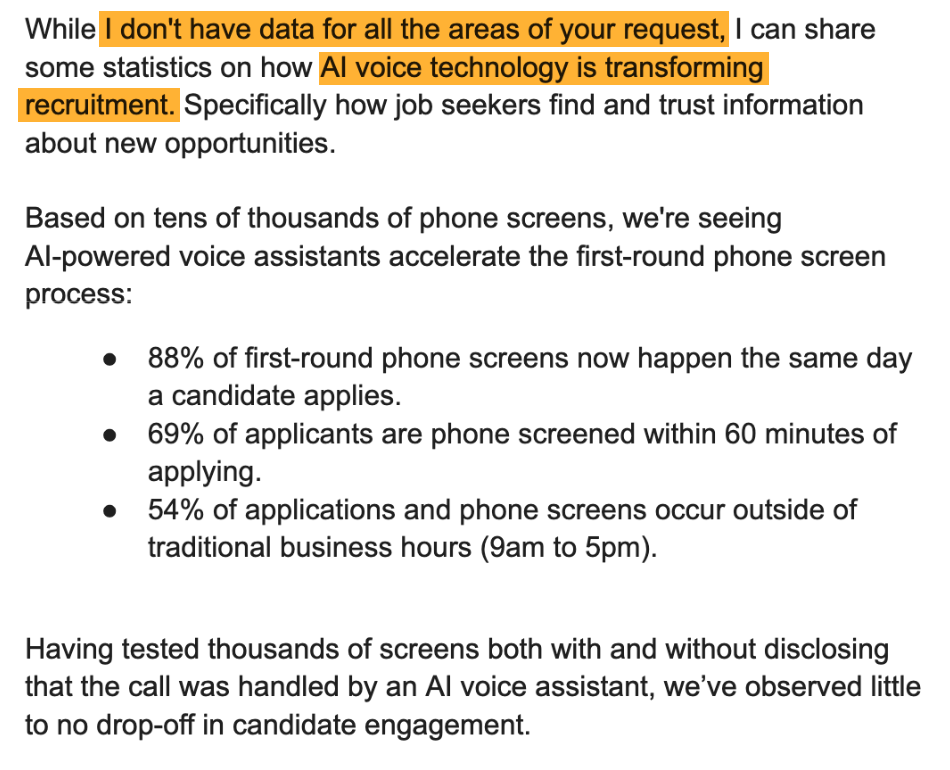
Or, there was a lot of over-explaining and conjecture going on. Instead of offering me unique information to enhance my angle, they explained how Google works as though I weren’t already in the industry.
Here’s an example:

In other words, they did a lot of telling and over-explaining. Most of those replies provided info I could find in AI Overviews in 30 seconds.
So instead of telling a journalist “what” the topic is, show them evidence that speaks to “how” or “why” something is going on. Something they cannot find on Google easily. Keep it brief and get to the point asap.
2. Avoid “Trust me, bro” type of language
Many responses I received had phrases like “I’ve personally seen…” or “I witnessed firsthand…”
If you can back up your claim, there’s nothing wrong with using this language. Otherwise, this is what it comes across as:
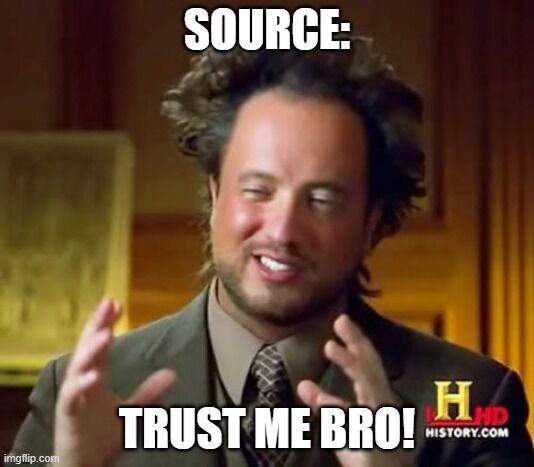
Keep in mind, journalists and writers are using these platforms to crowdsource their research. What they need are valid sources they can easily fact-check and use to back up their claims.
Also, saying you’ve witnessed something everyone else has too decreases your chances of getting mentioned. For instance, for my callout, many responses said something like:
“I’ve witnessed firsthand how AI transforms industries, including search.”
Everyone’s witnessed this. This perspective is stating the obvious and is not worth quoting in an article.
3. Don’t share an opinion unless asked to
Over 80% of the responses I received contained an opinion, a small personal anecdote, or a conjecture.
However, I specifically mentioned that I was seeking rigorous data. All the responses that just shared their 2c without backing it up in a tangible way were ignored because it wasn’t what I needed or requested.
This is because opinions are hard to validate. If a writer is working on a post that requires credible citations and sources, there’s no chance you’ll get quoted unless you provide what they need.
4. Don’t make a writer follow up unnecessarily
The most frustrating (and often useless) responses a writer receives from a callout look like “I’m interested to talk with you, please book a meeting.”

Follow-ups are time-consuming, and sources are often fickle. Unless you’re super famous or work for a major brand, no one’s booking a time to talk with you before you’ve validated that you:
- Are a credible source
- Have the information they need
- Won’t waste their time
But if you’ve provided all of this in a timely manner, and the writer reaches out, following up quickly increases your chances of being mentioned:
Things that helped when I was doing outreach through HARO include:
- Speed to response
- Evident experience
- Offering answers to follow-ups. This was a surprisingly big booster for me.
5. Avoid sweeping generalizations
Following the theme of information that’s hard to quote, generalizations are near the top of that list, too.
For example, here are some generalizations in responses I received:
“Most people don’t click to the source of an AI response.”
“Most people assume if something shows up in a search, it must be vetted.”
“Many news and content companies will go out of business.”
If you want a journalist to quote you saying something like this, you absolutely must be able to back it up. Without evidence proving this statement, it becomes an ignorable piece of fluff that is better left unsaid.
6. Give journalists a punchy, quotable soundbite
The best responses I received (only a couple out of 47) stood out because they didn’t say the same thing as everyone else. They led with a unique idea or soundbite that would make me sound smart by quoting it.
It’s the difference between starting with:
“Search technology like Google’s SGE and AI-powered chat-style answers from Bing are dramatically changing the user experience of search results.”
Compared to starting with:
“AI changed search from question-and-answer to prediction-and-summary.”
The second option is quotable, it’s catchy, and it creates a curiosity gap, leading a reader to ask questions internally and to keep reading to find answers.
This particular response also closed with another quotable little gem:
“Search did not get dumber. It just got faster than its own quality control. And that changes the rules for everyone trying to stay visible.”
Yeah, yeah, I know it’s an opinion I didn’t ask for in my callout. But it’s sandwiching insights from an AI engineer that were fairly interesting. This opinion was just a cherry on top that left a bigger impression than most other replies.
7. Give the journalist what they want
This point should not feel new to you. It’s the cardinal rule of doing good SEO.
Funnily enough, the rules are the same for how to give a writer or journalist what they want versus how you do the same for searchers:
- Understand their intent
- Provide genuinely helpful content
- Showcase your EEAT to build trust
- Get to the damn point (no one’s reading your essay of a reply)
- Eliminate all fluff and conjecture
- Cite and verify your stats and sources
- Consider the user experience of your response
This last one in particular can be the difference between your response getting read or ignored. For example, check out this 900-word wall-of-text response:
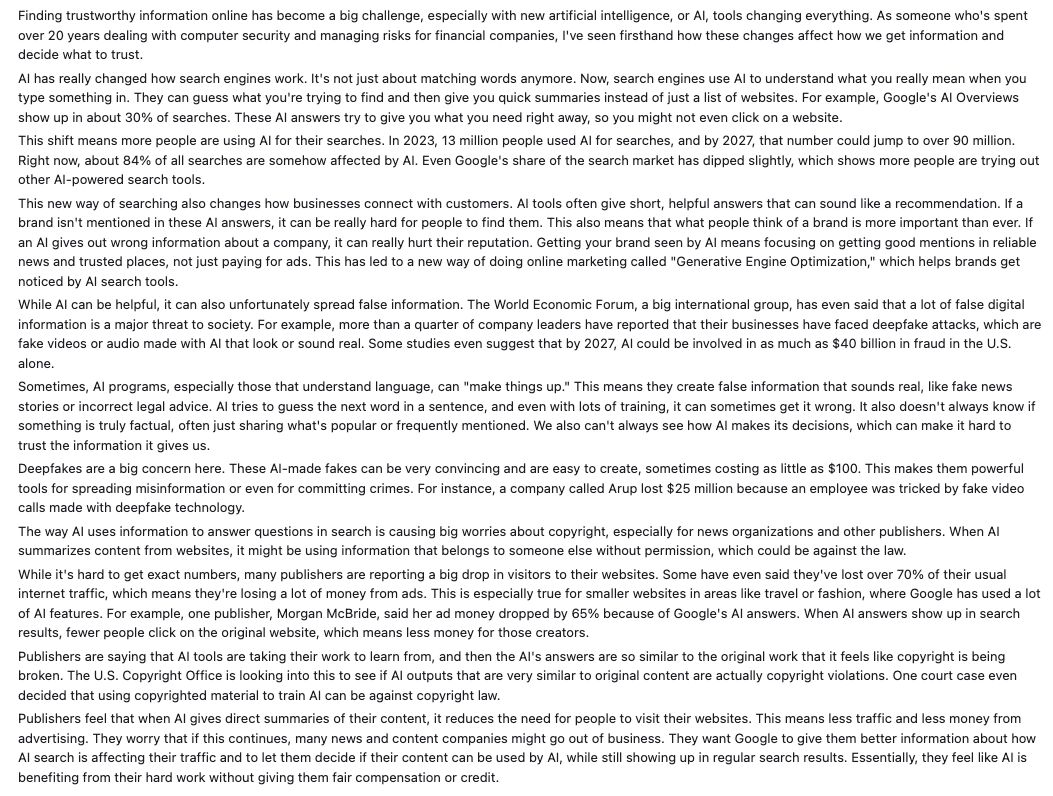
Keep in mind that journalists are reading responses in their email inbox. Imagine trying to get through this on your phone on the way to work.
Sure, there are some useful bits of info here, but it is hard work getting through it, verifying all the sources, and filtering out what’s irrelevant. Journalists on a tight deadline will skim this and put it in the “waste of time” or “too hard” basket if they don’t spot information relevant to their needs within 3 seconds.
Understanding the journalist’s intent is another thing you shouldn’t take lightly. Only 4% of the responses I received understood what I needed, like:
- Examples I hadn’t already found online
- Statistics or stories AI can’t generate
- Ways to enhance my existing knowledge of the topic
- Angles and perspectives that create a curiosity gap
- Links to valid sources so I could focus more on writing
When I asked HARO’s CEO, Brett Farmiloe, if he had insider tips from journalists about the pitches they love, here’s what he responded with:
I ran an SEO agency for 10 years—I get it. You’ve got clients to deliver for, deadlines looming, and pressure to show results. But HARO isn’t about you. It’s about helping a reporter out—and that starts with putting yourself in their shoes.
Many journalists are juggling multiple stories in a day. Writing is just one of several income streams, and their inbox is overflowing. What they need is simple: a verified, credible source. Not content ideas. Not “helpful” resource pages. Not stats they didn’t ask for. Just a clear, qualified source who can answer their question directly.
So here’s the insider tip: lead with your credentials. Include verifiable links (LinkedIn, company site, media mentions) so the journalist can vet you quickly. If you are the source—or know someone who is—make that unmistakably clear, and make their job easier. That’s what earns trust. And that’s what leads to coverage.”
Which brings us to the next point.
8. Establish why your expertise is relevant and authoritative
Lead with one or two clear sentences that tell the journalist why you’re a credible source.
If your company is relevant or widely known, mention it. Otherwise, skip the name-drop if it has no connection to the topic. For instance, here’s the opening line of one of the pitches I felt was not aligned with the topic:

It’s ok if your company isn’t exactly what the writer requested. If that’s the case, lead with what’s relevant so they don’t dismiss the rest of your response.
That could be your job title. For instance, “IP lawyer” is relevant to my callout. “VP of Sales” is not.
Or lastly, lean on your years of experience in the industry. If you can’t summarize your credibility and relevance in one sentence using one of these three elements, take a moment to really consider if it’s the right callout to respond to.
For example, here’s a pitch I loved that seems counterintuitive or irrelevant at first:
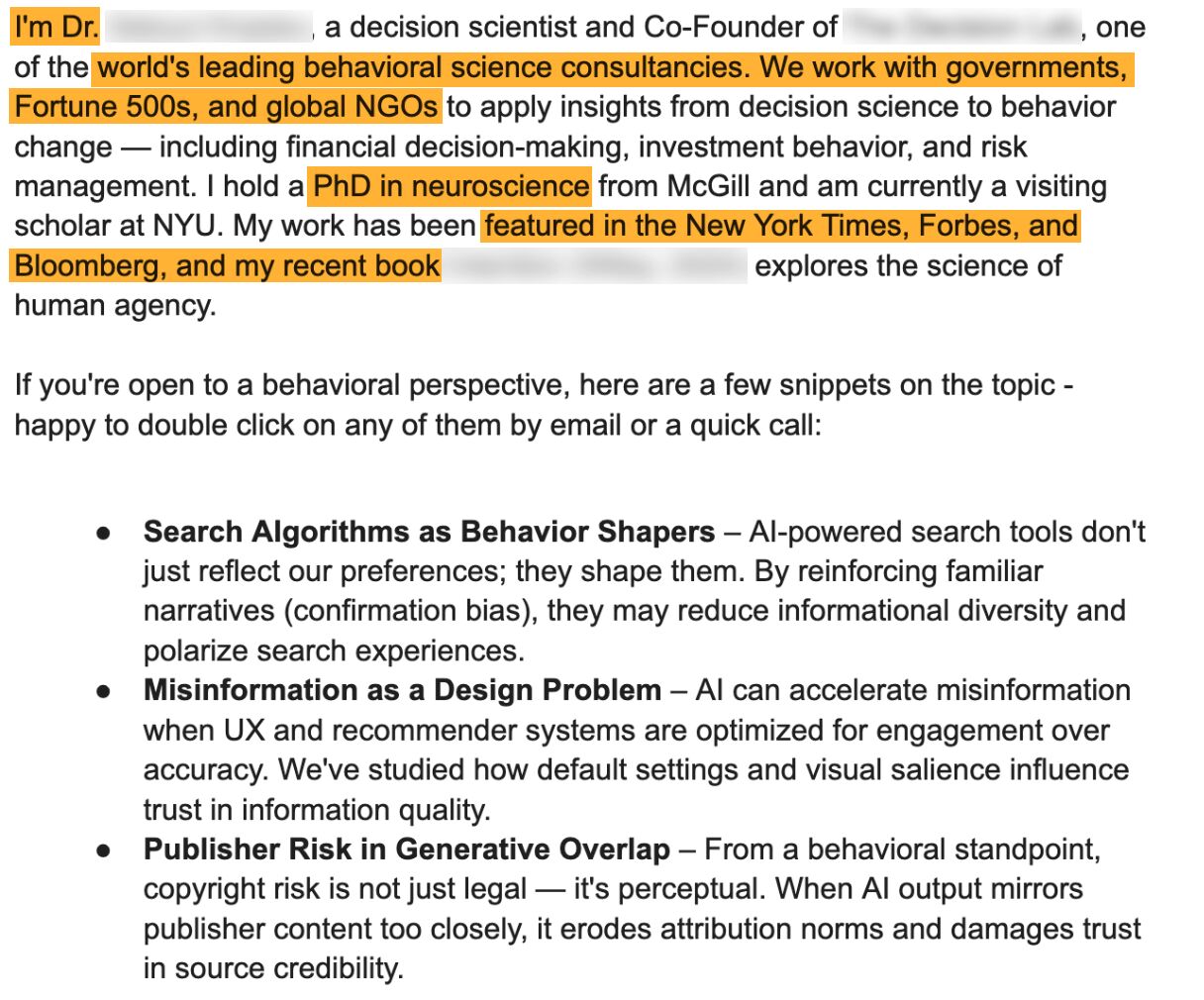
At first, I read up until “NGOs” and skipped the rest of the intro because enough credibility was established that I then wanted to see where the relevance was.
The three dot points then captured my attention because I felt a curiosity gap. This expert could provide credible, insights from a unique lens I hadn’t yet thought of, and they did a great job connecting a seemingly irrelevant profession to my topic.
This is an example of a great response, despite the high chance it was generated or summarized by AI. It echoes the experiences of others on our team:
The most success I’ve had was representing a client with an impressive niche background who was well known in the industry.Similar story when I tried it for myself too. I’d say what works is to be somewhat well-known, have an impressive background, job title, or work for a known company. It can often be a popularity contest.
Anatomy of a perfect HARO pitch
Putting all of the above together, here’s an example of what a great HARO pitch includes:
- Open with a sentence or two establishing your credibility
- Provide short, skimmable insights answering exactly what the journalist asked for
- Include quotable one-liners or interesting thought leadership that resonates
- Close with a brief bio, a headshot, and any other info establishing your authority
- Add your contact details so that the journalist can follow up if they have questions
But the truth is, you can break these rules and still deliver a winning pitch.
What matters more than the format of your pitch is how helpful and relevant it is to the journalist who submitted the callout.
Success with HARO comes down to the HARO acronym itself: be Helpful, Authentic, Relevant, and On Time.
First, be helpful. HARO isn’t a numbers game. If your response doesn’t truly add value to the journalist’s story, don’t send it. The best-performing sources focus on quality over quantity.
Second, be authentic. Journalists—and HARO—can tell when a pitch is AI-generated. What they want is real expertise and earned experience. Share insights that only you can provide.
Third, be relevant. Journalists include detailed prompts for a reason. If your pitch doesn’t directly address their request, it can be flagged as off-topic. We monitor those reports and take them seriously.
Finally, be on time. Journalists often work on tight deadlines. The earlier you respond, the better your chances of being included.
That’s the formula. Helpful. Authentic. Relevant. On time. It works.
You can use Ahrefs’ Brand Radar to conduct light research and tailor your pitches to each publication.
Enter the website of the publication you want to be featured in. Then enter your main topic to see what content has already been published about the topic:
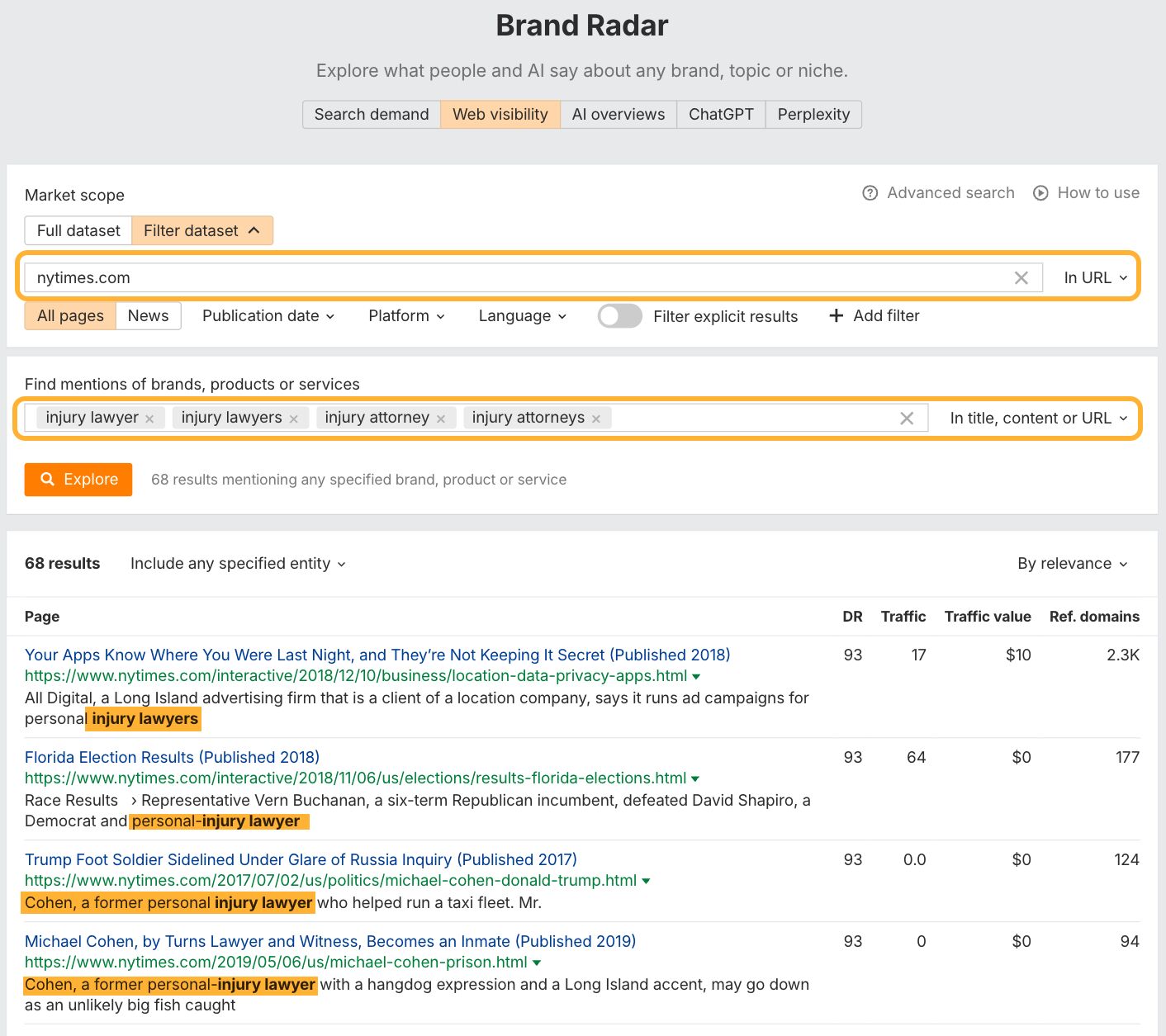
Open up the posts to see how experts like you were featured in the article. What type of quote or information did they provide that strengthened the piece?
Use these insights to tailor your pitch to the journalist whose callout you’re responding to.
Doing your homework pays off. Before you pitch, read past articles from the journalist and take note of the types of quotes they tend to use. Doing this will increase your likelihood of getting quoted.
Another way you can improve your chances is by responding to callouts on other platforms similar to HARO.
To find out which HARO alternatives are being used (and trusted), our team surveyed professionals to vote for their top three HARO alternatives. Here are the winners:
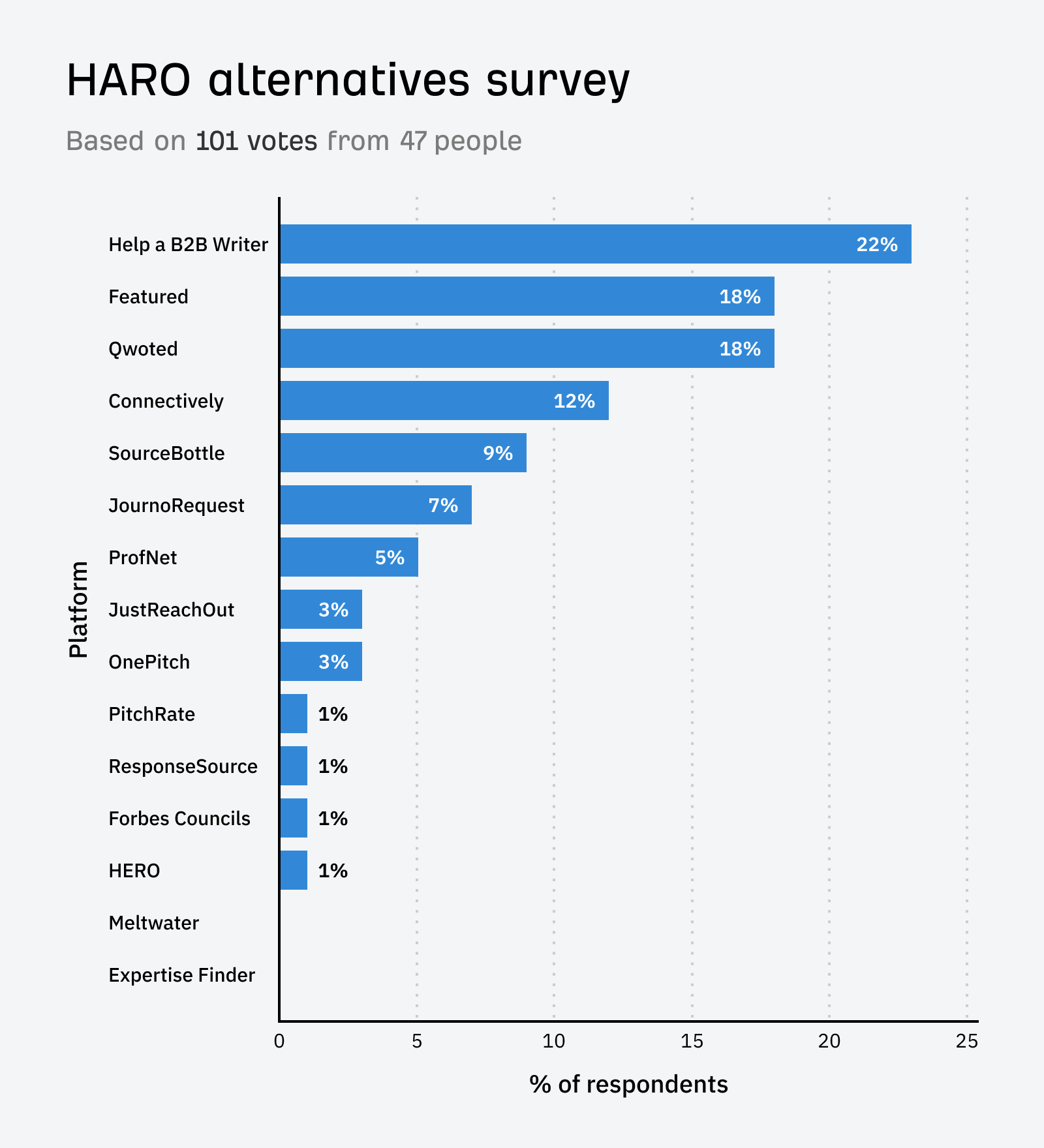
The team from Jolly SEO was also kind enough to share some internal data with us based on the thousands of pitches they’ve sent this year. Here are the platforms they’ve found most success with, how long it takes to see a link go live after pitching and the average word length of successful pitches:
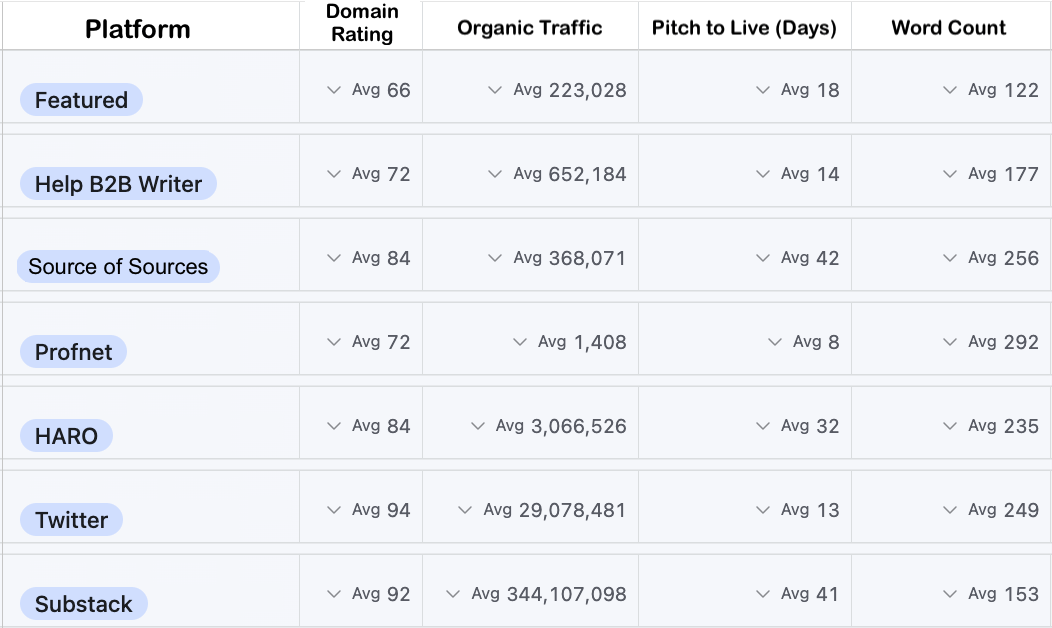
You can also try out the following platforms to find the best fit in your industry.
1. Help a B2B Writer

Price: Free.
Help a B2B Writer was the #1 alternative platform respondents recommended. In the survey, it got 22% of the vote.
Help a B2B Writer is a platform run by Superpath that is similar to HARO but focused on connecting business-to-business (B2B) journalists with industry experts and sources for their stories.
2. Featured
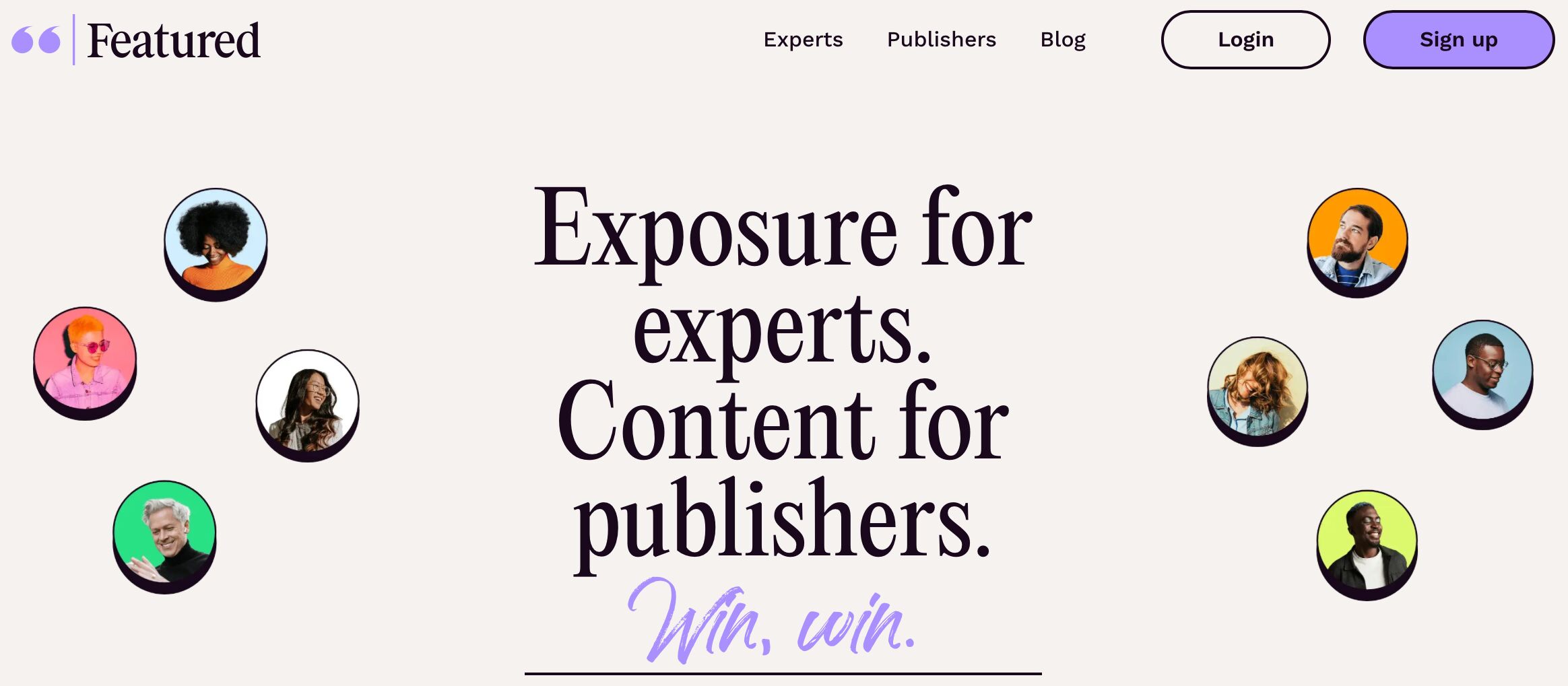
Price: Free and paid plans. Paid plans start at $99 per month.
Coming in joint second place, Featured was popular, scoring 18% of the vote.
Featured.com owns and operates HARO, and together, the two platforms form a powerful ecosystem for connecting journalists with expert sources.
While HARO operates as a daily email newsletter, Featured is a modern platform designed to streamline the pitching experience.
HARO helps reporters. Featured helps sources get featured. And together, they work hand-in-hand to bring credibility, speed, and trust back to the media sourcing process.
3. Qwoted

Price: Free and paid plans.
Qwoted is another platform that I’ve heard talked about a lot. It came in joint second place, scoring 18% of the vote.
Qwoted matches journalists with expert sources, allowing them to collaborate on creating high-quality content. It streamlines the process of finding and connecting with relevant sources.
4. SourceBottle
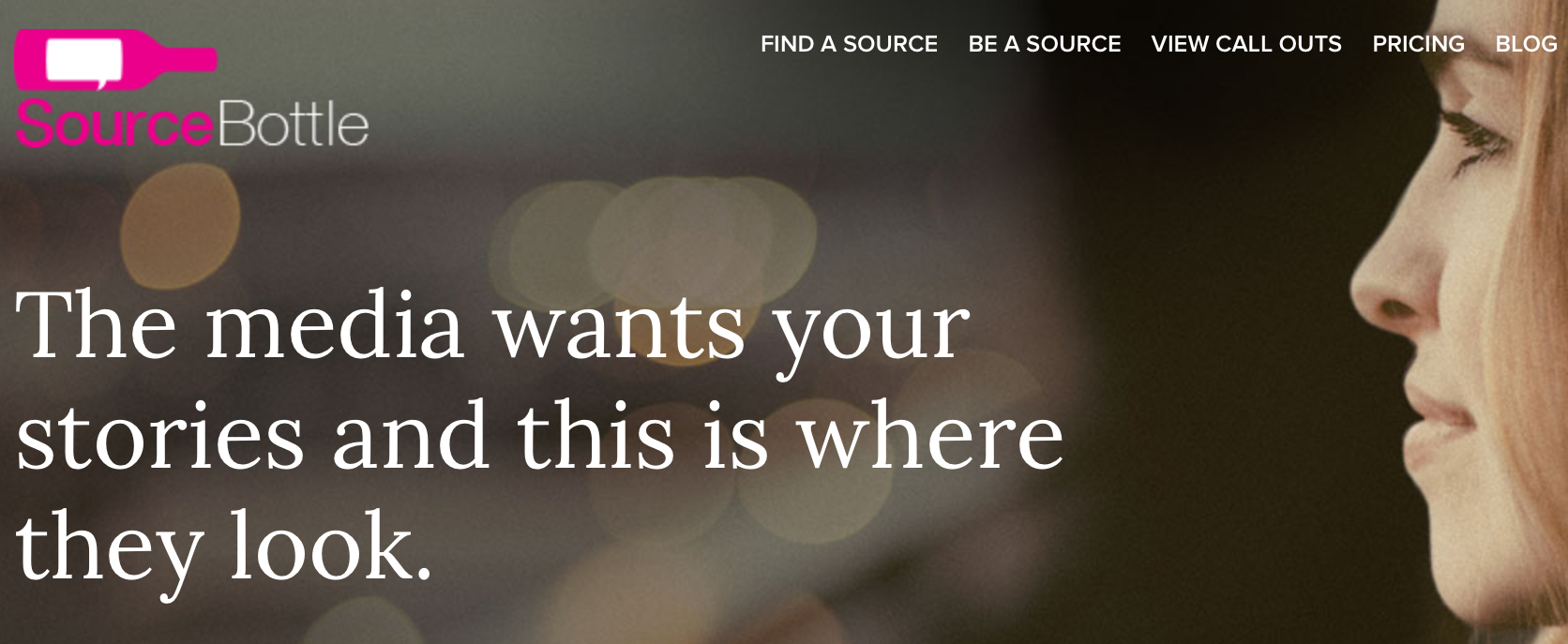
Price: Free and paid plans. Paid plans start at $5.95 per month.
SourceBottle is an online platform that connects journalists, bloggers, and media professionals with expert sources. It allows experts to pitch their ideas and insights to journalists looking for story sources. It scored 9% of the vote in our survey.
5. ProfNet
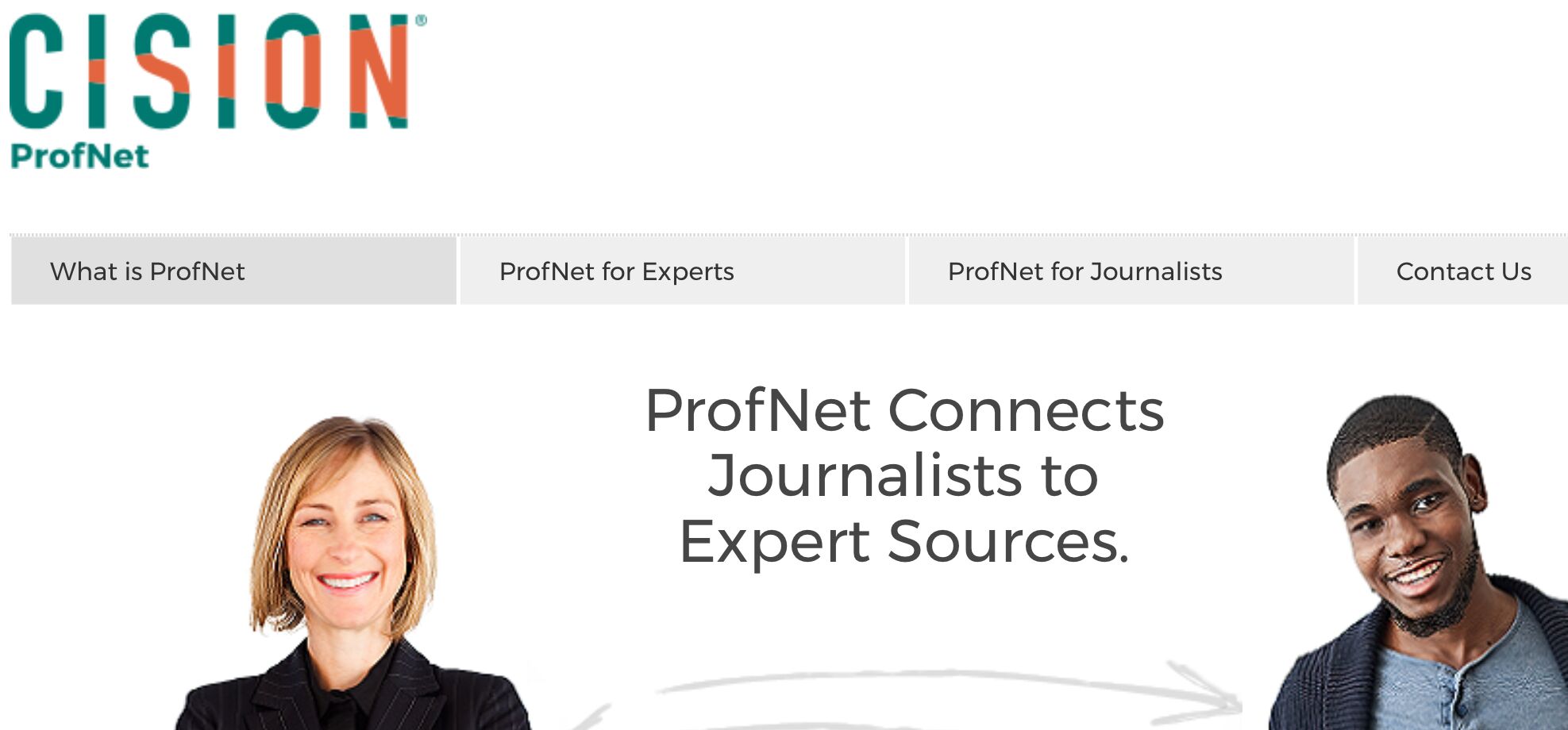
Price: Paid plans.
ProfNet connects journalists to expert sources. It helps journalists find knowledgeable sources for their articles, interviews, and other media content. It helps subject matter experts gain media exposure and share their expertise. It scored 5% of the vote in our survey.
6. JustReachOut

Price: 7-day free trial and paid plans. Paid plans start at $147 per month.
JustReachOut is a PR and influencer outreach platform that helps businesses find and connect with relevant journalists and influencers. It provides tools for personalized outreach and relationship management. It scored 3% of the vote in our survey.
7. OnePitch
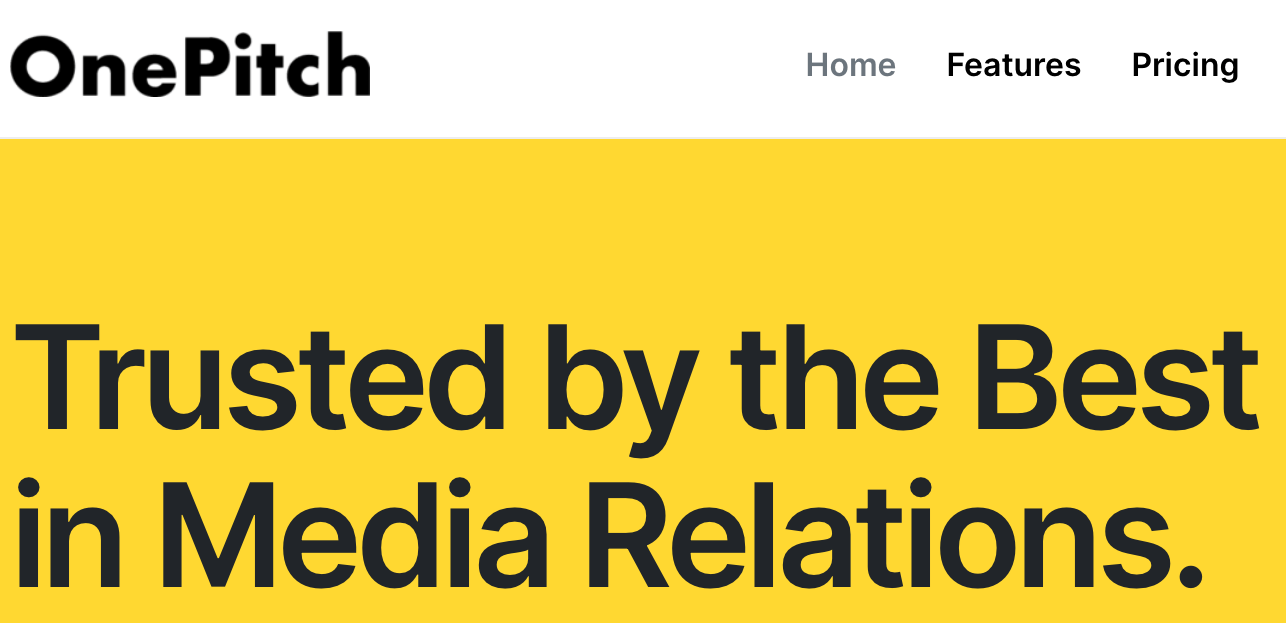
Price: 14-day free trial and paid plans. Paid plans start at $50 per month.
OnePitch is a platform that simplifies the process of pitching story ideas to journalists. Businesses and PR professionals can create and send targeted pitches to relevant media outlets. In the survey, it scored 3% of the vote.
8. PitchRate
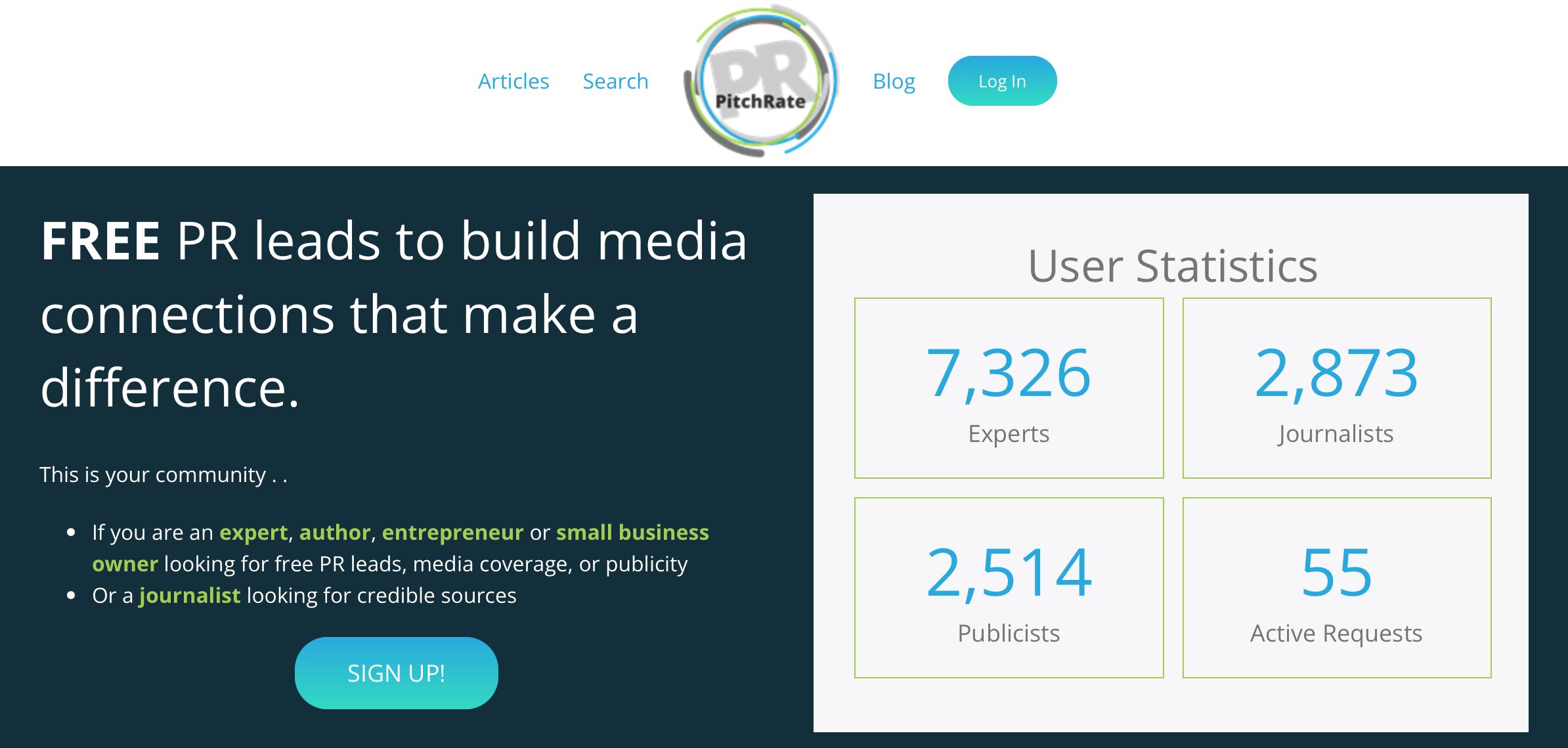
Price: Free.
PitchRate is a free PR tool that connects journalists and highly rated experts. It is helpful for subject matter experts looking for free PR leads, media coverage, publicity, or journalists looking for credible sources. In the survey, it scored 1% of the vote.
9. ResponseSource
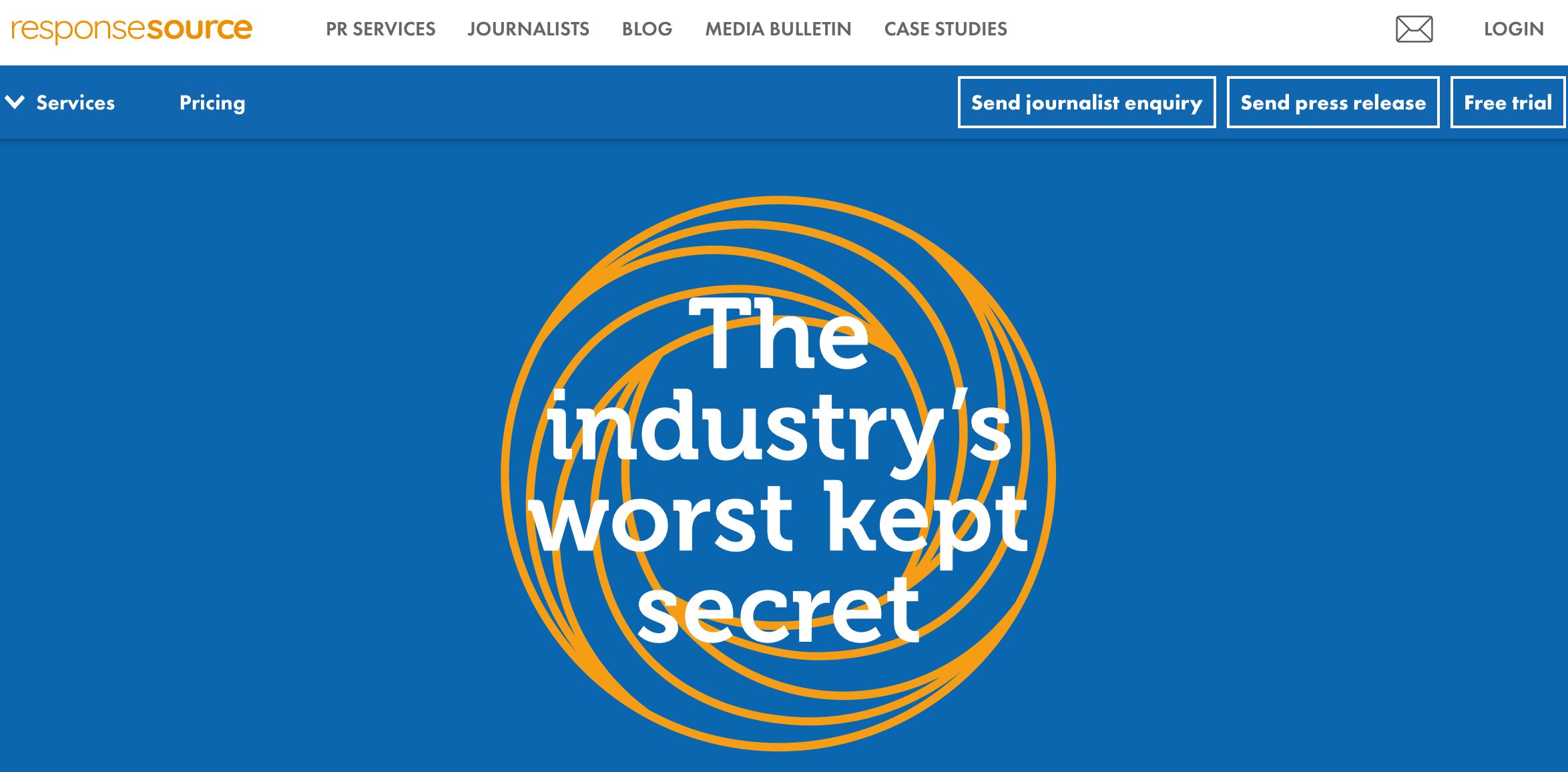
Price: Free and paid plans. Paid plans start at ~$105 per month.
A UK service that connects media professionals with expert sources, press releases, and PR contacts. It scored 1% of the vote in the survey.
10. Forbes Councils

Price: Invitation-only platform.
Forbes Councils is an invitation-only community for executives and entrepreneurs. Members can contribute expert insights and thought leadership content to Forbes.com and gain media exposure. It scored 1% of the vote in the survey.
11. Source of Sources
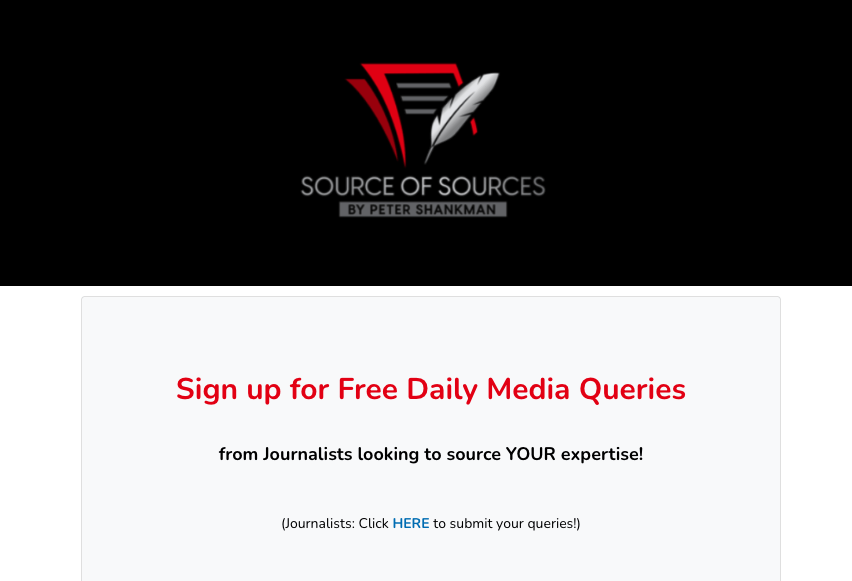
Price: Free.
Yes, you read that right.
Source of Sources was created by Peter Shankman, the original creator of HARO, who said the platform will always be free. It scored 1% of the vote in our survey.
Peter set up the platform after receiving over 2,000 emails asking him to build a new version of HARO.
Final thoughts
SEO is undergoing a shake-up as AI-powered search becomes the new norm. However, where links were a dominant ranking signal, this has expanded to include brand mentions.
Whether it’s Google or ChatGPT surfacing answers, your visibility now depends on how often and where your brand is mentioned as a trusted source.
When done right, HARO link building can be an effective way to earn more authoritative mentions.
It’s a strategic arm of your digital PR for the future of search. One that helps you earn trust, build authority, and show up when it counts.







